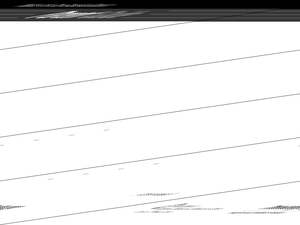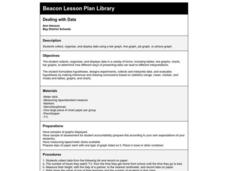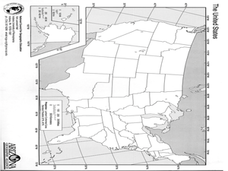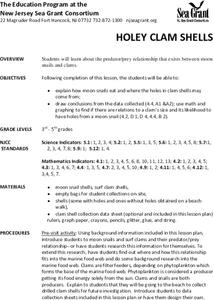Curated OER
Natural Resources and Transportation in the United States
Students study thematic maps (included with the lesson) to determine possible relationships. They develop three hypotheses about the relationship. Students choose one of their hypotheses to explain. The explanation is to include reasons...
Curated OER
For The Birds
Seventh graders list the features of an ecosystem and identify local bird species. In this bird lesson students work in groups to formulate a hypothesis and test their theory by collecting and analyzing data.
Curated OER
A State of Obesity
Young scholars compare obesity trends between states. In this health studies lesson, students conduct research to compare and contrast obesity trends from state to state. Young scholars view a PowerPoint presentation to...
Alabama Learning Exchange
Teaching the Scientific Method
Eighth graders watch a PowerPoint presentation that focuses on the scientific method including developing a hypothesis. They examine how to perform a scientific experiment using a method that maintains its validity, collect and use the...
Curated OER
Preservation and the Power of Light
Students identify the effect of light on objects. In this scientific inquiry lesson, students use a chart to write a hypothesis about what will happen when colored construction paper is left in sunlight. Students observe and discuss the...
Curated OER
Coffee Cooling
Students explore the factors that affect how long coffee stays hot. They develop a question and a testable hypothesis for one factor such as initial temperature or size of opening of the container. Then they design and conduct an...
Curated OER
Clouds: an Internet Based Lesson Plan
Students watch a teacher demonstration of cloud formation. They research cloud formation on the Internet to write reports that summarize the process of cloud formation.
Curated OER
How Do The Colors of Light Mix?
Students investigate the mixing of light. They form a hypotheses to reason why color changes occur and they write conclusions and ask new questions arising from the investigation. Students identify the primary and complementary colors of...
Curated OER
Bigger Better Bubbles
Students research different types of bubble gum and identify the variables in them. In this bubble gum instructional activity students design an investigation to test their hypothesis and graph their data.
Curated OER
Dealing With Data
Students collect, organize, and display data using a bar graph, line graph, pie graph, or picture graph. They write a summary describing the data represented and compare the graph to another graph in the class.
Curated OER
Route 66 And Population Patterns
Young scholars investigate the geography located along Route 66. They research how the population patterns change in certain areas along the highway. Students use the information in order to form hypotheses about how and why the...
Curated OER
Using The Scientific Method
Middle schoolers are given a problem or hypothesis, they can create a relevant experiment using the steps to the scientific method. They collect quantitative and qualitative observations in scientific experiments. Students identify the...
Curated OER
Continental Drift
In this continental drift instructional activity, students review the evidence that supports Wegener's hypothesis of continental drift. This instructional activity has 7 matching and 2 short answer questions.
Curated OER
Experimenting with Erosion
Students investigate the process of erosion and factors that influence the rate of soil loss. In this erosion lesson students formulate a hypothesis and analyze the results of their experiment.
Curated OER
Soggy Seeds
Learners conduct experiments to learn about seed germination. In this seed germination lesson, students write a hypothesis for the seed experiment. learners complete the experiment for seed germination and graph the data obtained from...
Curated OER
Living Fossils
Students study the term living fossil and examine why some of the reasons they survived. In this fossils lesson students form a hypothesis and use data to see if it is accurate.
Curated OER
Make A Plan
In this science learning exercise, students create a plan on what product they will test. They describe what they want to discover about this product and write questions that address the goal of their experiment. Finally, students...
Curated OER
The Battle of Stones River: The Soldiers' Story
Learners organize items in a "doohickey kit" distributed by the teachers, creating categories using classification schemes. In this classification lesson, students compare systems within groups and write questions that could be answered...
Curated OER
Holey Clamshells
Students analyze data to make hypotheses and conclusions regarding the predator/prey relationship between moon snail and surf clams.
Curated OER
Identification of Animals by Serum Electrophoresis
Students compare their unknown serum against a set of known serum standards and determine the animal source of their serum. They write a lab report to communicate their results.
Curated OER
The Diverse History of the Washington
Students analyze a different portion of a photograph trying to figure out
what is taking place in the picture. They share their written suggestions. Students discuss similarities and differences in the hypotheses made. They explore...
Curated OER
Analysis of Lobster Claw Function. An Exercise in Biomechanics
Students observe two chelae. They write three differences they observe in their notebooks. Students suggest a hypothesis which would explain these differences. They dissect the chela. Students analyze the lobster claw as a mechanical lever.
Curated OER
What's the Fizz Factor: Mentos in Cola
In this what's the fizz factor: Mentos in cola worksheet, students conduct an experiment using Mentos in several kinds of diet cola and regular cola, writing the hypothesis, recording the results, and writing a conclusion.
Curated OER
Conditional Statements
In this geometry worksheet, students read given sentences identifying the hypothesis, and conclusion. They rewrite sentences usign the if-then form. There are 14 questions.























